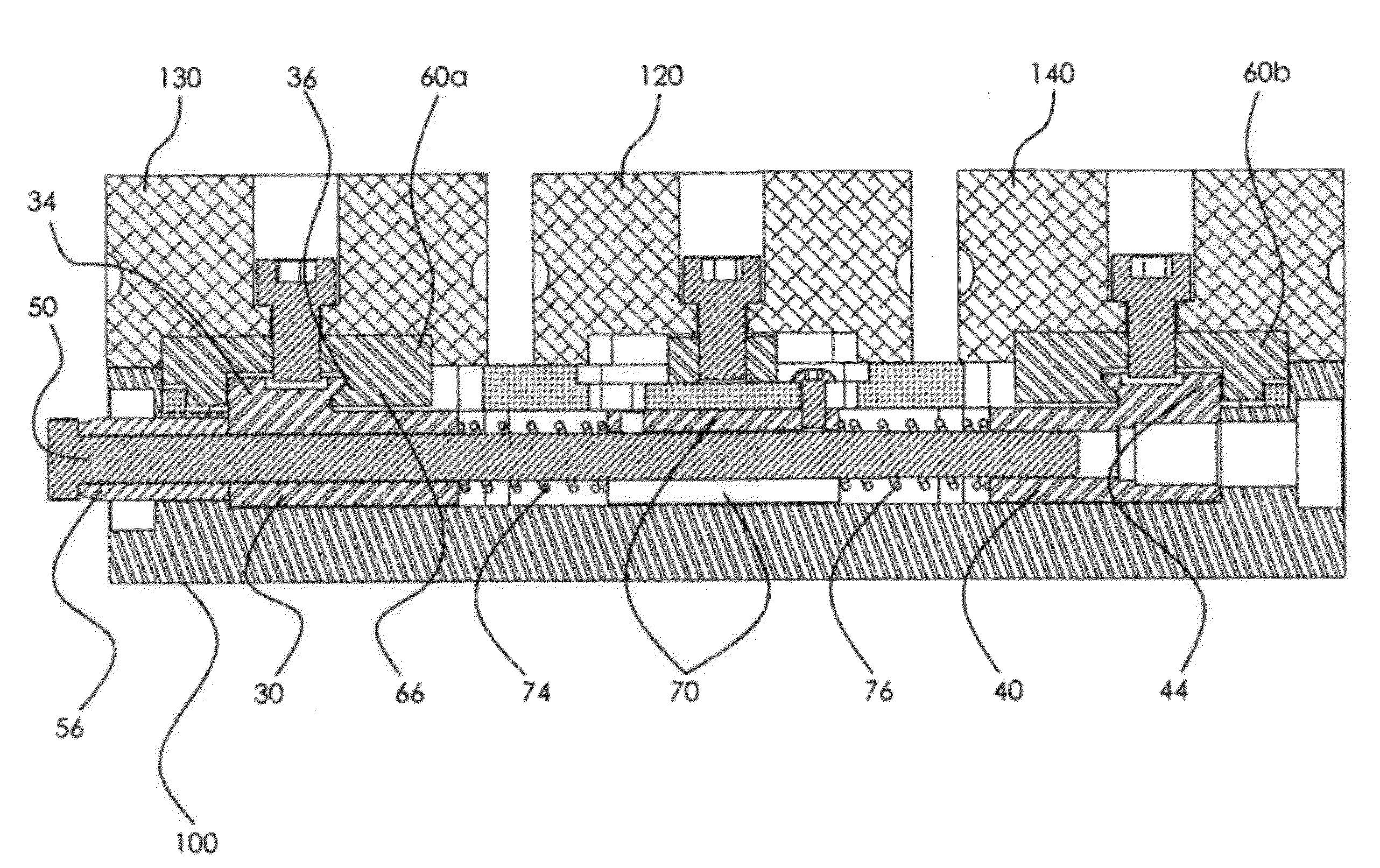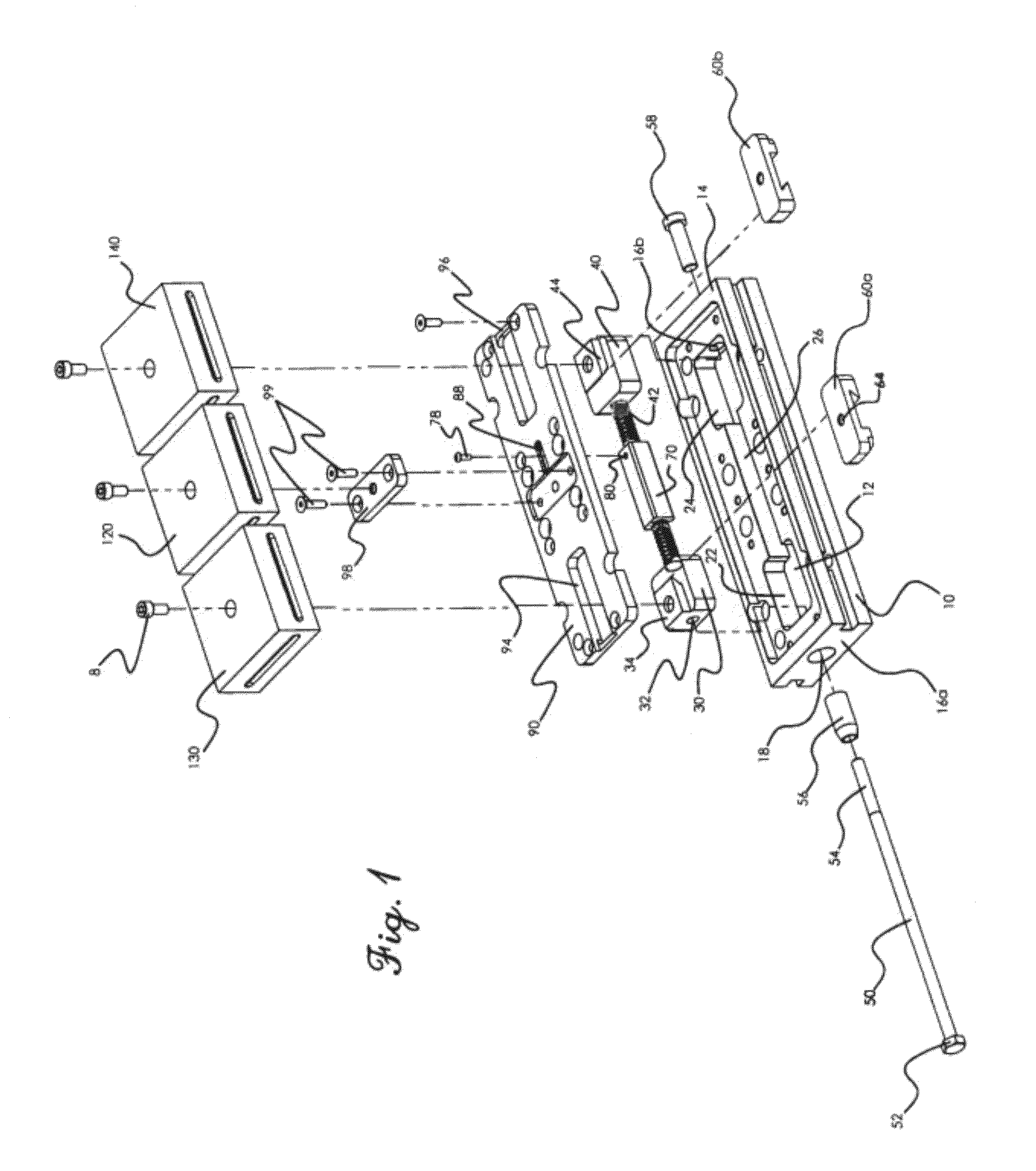High-density fixture vise
a fixture and high-density technology, applied in the field of vises, can solve the problems of limiting the depth of contouring, intricate design of jaws, and not having the functionality for use with other workpieces
- Summary
- Abstract
- Description
- Claims
- Application Information
AI Technical Summary
Benefits of technology
Problems solved by technology
Method used
Image
Examples
Embodiment Construction
[0029]FIGS. 1 and 2 illustrate perspective exploded views of a dual-station machine vise and a multi-station machine vise, respectively. It will be appreciated that the multi-station machine vise of FIG. 2 effectively comprises four of the dual-station vises illustrated in FIG. 1 mounted in parallel. However, the operative components of the internal drive assemblies of both of these devices are substantially identical. For purposes of discussion, the dual-station vise of FIG. 1 is discussed, however, it will be appreciated that the discussion of the components of this dual-station vise are applicable to the multi station vise of FIG. 2.
[0030]As shown, the vise 100 has first and second movable jaws 130 and 140 that may be utilized to compress work pieces relative to a stationary central jaw 120. As shown, the base 10 includes a drive assembly recess 12 that extends from near a front wall or end 16a of the base 10 to the near rear wall or end 16b of the base 10. Of note, the drive ass...
PUM
 Login to View More
Login to View More Abstract
Description
Claims
Application Information
 Login to View More
Login to View More - R&D
- Intellectual Property
- Life Sciences
- Materials
- Tech Scout
- Unparalleled Data Quality
- Higher Quality Content
- 60% Fewer Hallucinations
Browse by: Latest US Patents, China's latest patents, Technical Efficacy Thesaurus, Application Domain, Technology Topic, Popular Technical Reports.
© 2025 PatSnap. All rights reserved.Legal|Privacy policy|Modern Slavery Act Transparency Statement|Sitemap|About US| Contact US: help@patsnap.com



